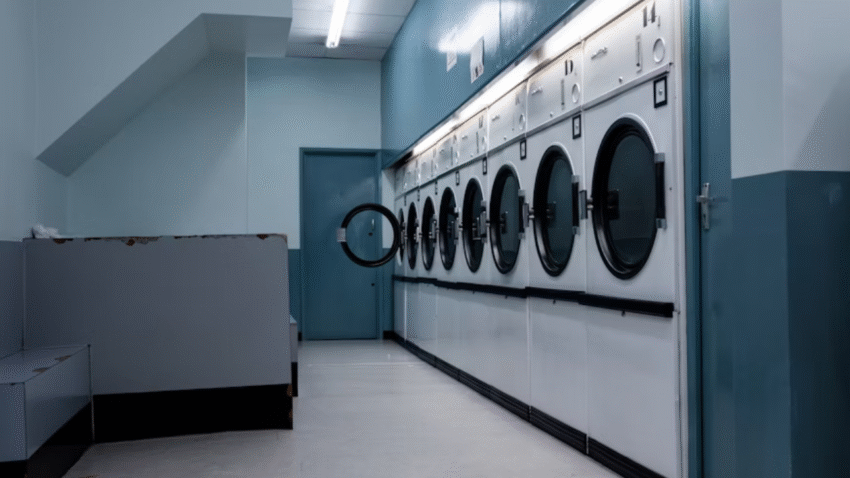Introduction
A backsplash isn’t just for kitchens—it can also be a functional and stylish addition to your laundry area. Whether you want to protect your walls from water splashes, detergent spills, or simply add personality to the space, installing a backsplash is a straightforward project that can transform the look of your laundry room. This guide will walk you through how to add a backsplash to a laundry area, from choosing materials to final installation.
Why a Backsplash Matters in a Laundry Room
Adding a backsplash offers both practical and aesthetic benefits:
- Wall Protection: Shields walls from water, detergent, and bleach splashes.
- Easy Cleaning: Smooth surfaces wipe clean easily compared to painted drywall.
- Style Upgrade: Adds color, texture, and personality to the space.
- Increased Home Value: Gives the laundry area a more finished, custom look.
Whether your laundry area is in a dedicated room, hallway, or garage, a backsplash can make it both more durable and attractive.
Step-by-Step Guide to Adding a Backsplash
1. Choose Your Backsplash Material
There are many options depending on budget, style, and ease of installation:
- Peel-and-Stick Tiles: Great for beginners, easy to cut, no grout needed.
- Ceramic or Porcelain Tiles: Classic choice with endless designs and colors.
- Glass Tiles: Modern and sleek, reflect light for a brighter space.
- Beadboard Panels: Rustic look, can be painted to match decor.
- Stainless Steel Sheets: Durable and industrial-style.
Pro Tip: In a laundry area, choose moisture-resistant materials for longevity.
2. Measure the Space
- Measure width and height of the area you want to cover.
- If you’re installing behind a sink or appliances, include extra height for splash zones.
- Calculate total square footage and add 10% for waste and mistakes.
3. Gather Tools and Materials
Tools:
- Tape measure
- Level
- Utility knife (for peel-and-stick) or tile cutter/wet saw (for ceramic/glass tiles)
- Notched trowel (for thinset)
- Sponge and bucket (for grouting)
Materials:
- Chosen backsplash material
- Adhesive (tile mastic or thinset for traditional tiles, built-in adhesive for peel-and-stick)
- Grout (if needed)
- Tile spacers (for even gaps)
- Silicone caulk for edges
4. Prepare the Wall Surface
- Clean the Wall: Remove dust, grease, and detergent residue with a mild cleaner.
- Repair Imperfections: Fill holes or cracks with spackle and sand smooth.
- Prime if Necessary: If using porous surfaces like drywall, apply primer for better adhesion.
5. Plan the Layout
- Lay out your tiles or panels on a flat surface to determine the best pattern.
- Center the design so partial tiles are even on both sides.
- Mark horizontal and vertical guidelines on the wall with a level.
6. Install the Backsplash
For Peel-and-Stick Tiles:
- Peel backing paper from the first tile.
- Align with your guidelines and press firmly into place.
- Continue installing, using a utility knife to trim around outlets or corners.
For Traditional Tiles:
- Spread adhesive on a small section of the wall with a notched trowel.
- Press tiles into adhesive, using spacers for even gaps.
- Continue until the area is covered, checking alignment regularly.
7. Cut Tiles as Needed
- Use a tile cutter for straight cuts.
- Use a wet saw for glass or stone tiles.
- Measure carefully before cutting to avoid waste.
8. Apply Grout (Traditional Tiles Only)
- Let adhesive cure for 24 hours before grouting.
- Spread grout over tiles using a rubber float, pressing into gaps.
- Wipe away excess grout with a damp sponge, rinsing frequently.
- Allow grout to cure per manufacturer’s instructions.
9. Seal Edges and Finish
- Apply silicone caulk along the bottom edge where backsplash meets countertop or appliances.
- Caulk around outlets and corners for a clean, moisture-resistant finish.
- Wipe tiles with a soft cloth to remove haze or dust.
Common Mistakes to Avoid
- Skipping Wall Prep
- Mistake: Dirty or uneven walls lead to poor adhesion.
- Solution: Always clean, patch, and smooth walls before installation.
- Not Using a Level
- Mistake: Tiles gradually slope, ruining the look.
- Solution: Mark guidelines and check level often.
- Overusing Adhesive
- Mistake: Excess glue seeps between tiles.
- Solution: Apply thin, even layers.
- Not Accounting for Outlets
- Mistake: Tiles don’t fit properly around electrical boxes.
- Solution: Cut tiles precisely and use outlet extenders if needed.
- Skipping the Sealant
- Mistake: Water seeps behind tiles over time.
- Solution: Always seal edges with silicone.
Extra Laundry Room Tips for Backsplash Owners
- Choose Light-Reflecting Tiles: Makes small laundry areas feel brighter.
- Add Under-Cabinet Lighting: Highlights backsplash and improves visibility.
- Use a Fun Pattern: Chevron, herringbone, or mosaic tiles add visual interest.
- Coordinate with Countertop: Matching colors create a cohesive look.
- Keep Cleaning Supplies Nearby: Backsplash surfaces clean easily with a mild soap and water.
For more style ideas, see our “How to Build a Custom Laundry Countertop Over Washer and Dryer” guide to pair with your backsplash.
Conclusion
Learning how to add a backsplash to a laundry area is an easy way to protect your walls while adding style to your space. Whether you choose simple peel-and-stick tiles or a full ceramic installation, the process is straightforward with the right materials and preparation.
Pro Tip: If you’re unsure about cutting complex tile patterns, start with peel-and-stick tiles or large panels for a quick win without advanced tools.
Bookmark this guide so you can confidently tackle your backsplash project and give your laundry room a polished, functional upgrade.
